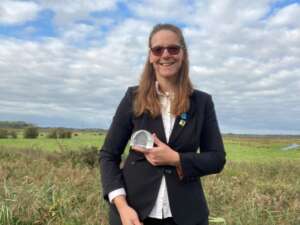Migration routes of one of Britain’s largest ducks revealed for the first time, but much still remains a mystery
New research, just published in the journal Ringing & Migration, has used state of the art tracking technology to investigate how one of Britain’s largest ducks, the Shelduck, interacts with offshore wind turbines during their migration across the North Sea. Their findings reveal – for the first time – the length, speed and flight heights of this journey.



